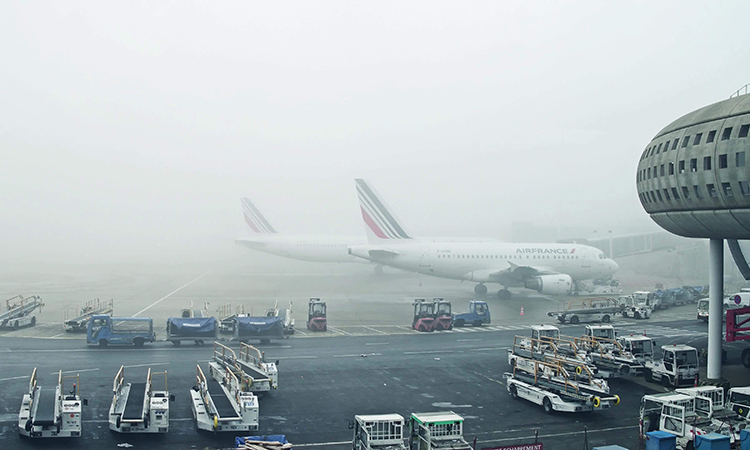EASA publishes proposal for updated framework applicable to all-weather operations
Posted: 3 June 2021 | International Airport Review | No comments yet
EASA has outlined that updating the necessary framework to allow for the application of the latest technology will support airports in ensuring all-weather operations.


The European Union Aviation Safety Agency (EASA) has published a proposal to update the regulatory framework that is applicable to all-weather operations (AWOs) and flight crew training to allow for the application of the latest technological advancements. This proposal would increase the number of medium-sized aerodromes which are accessible for flight operations.
The concept of all-weather operations refers to the ability of aircraft to take off and land in an airport under low visibility conditions. In such circumstances, technological support can ensure safe operations in situations that would otherwise pose safety challenges. While large aerodromes are, for the most part, already equipped for such operations, medium-sized or regional airports have typically, so far, been unable to afford the investment required.
“This opinion is innovative in certifying the use of technologies that are already available to increase safety, while, at the same time, broadening the commercial network by increasing the accessibility to medium-sized airports and bringing environmental and cost advantages by reducing the number of diversions due to poor visibility,” said EASA’s Executive Director, Patrick Ky. “It takes a performance and risk-based approach to increase safety in a cost-effective way, taking advantage of technological innovations.”
Join us live: Shaping the Next Generation of Hold Baggage and Air Cargo Screening
Join us live for an insightful webinar on 11th December at 14:00 GMT, in collaboration with Smiths Detection, as we explore the strategic balance of operational efficiency, regulatory compliance, and sustainability in high-volume security environments.
This session offers a focused look into future-proofing your security strategy.
Key learning points
- Cost Reduction: Strategies to minimize bag travel time while simultaneously reducing operational costs.
- Regulatory Roadmap: Insights into the next wave of regulatory changes and their impact on future investment decisions.
- Sustainable Systems: Practical approaches to building sustainability into security systems and lowering the total cost of ownership (TCO).
- Scalable Solutions: Real-world examples of scalable systems supporting current airport growth and preparing for tomorrow.
Register now for expert insights, case studies, and actionable strategies on operational efficiency!
The opinion allows for the better integration and use of new, advanced technology, as well as new operational procedures to support AWOs. The rules are not technology-dependent and may accommodate future changes.
They ensure that the availability of aerodrome infrastructure (including meteorological equipment), information and procedures allow for the use of enhanced flight vision systems (EFVS) to the maximum extent possible (e.g. EFVS to land). They also allow for ‘light operational credits’ for EFVS 200 operations, which do require the use of specific approvals, therefore reducing the administrative burdens. In addition, they allow for safe helicopter flights under instrument flight rules (IFR), using point-in-space (PinS) approaches and departures.
The ability to conduct all-weather operations at an aerodrome is an important factor in network planning for commercial airlines. Aerodromes that cannot support this have an additional cost and risk attached: the aircraft may need to carry additional fuel to allow for a safe diversion if needed, and such diversions are, of course, also unpopular with passengers, who may land at an airport some distance from their intended destination.
Additionally, an approach in marginal conditions which has to be aborted (go-around) is costly in terms of fuel, which is bad financially and also for the environment. For these reasons, an airline is more likely to offer services to an airport which can support all-weather operations. This, in turn, can be good for the local region in increasing its connectivity.
Regarding flight crew training, the proposal improves the existing crew training and checking requirements for air operators. It addresses initial and recurrent training and checking; the conditions for operation on more than one aircraft type or variant; the acceptance of previous training and checking by non-commercial operators; and multi-pilot operations of single-pilot certified helicopters.
Stay Connected with International Airport Review — Subscribe for Free!
Get exclusive access to the latest airport and aviation industry insights from International Airport Review — tailored to your interests.
✅ Expert-Led Webinars – Gain insights from global aviation leaders
✅ Weekly News & Reports – Airport innovation, thought leadership, and industry trends
✅ Exclusive Industry Insights – Discover cutting-edge technologies shaping the future of air travel
✅ International Airport Summit – Join our flagship event to network with industry leaders and explore the latest advancements
Choose the updates that matter most to you.
Sign up now to stay informed, inspired, and connected — all for free!
Thank you for being part of our aviation community. Let’s keep shaping the future of airports together!
Related topics
Aircraft, Airside operations, Emissions, New technologies, Passenger experience and seamless travel, Safety, Sustainability, Sustainable development, Workforce


















